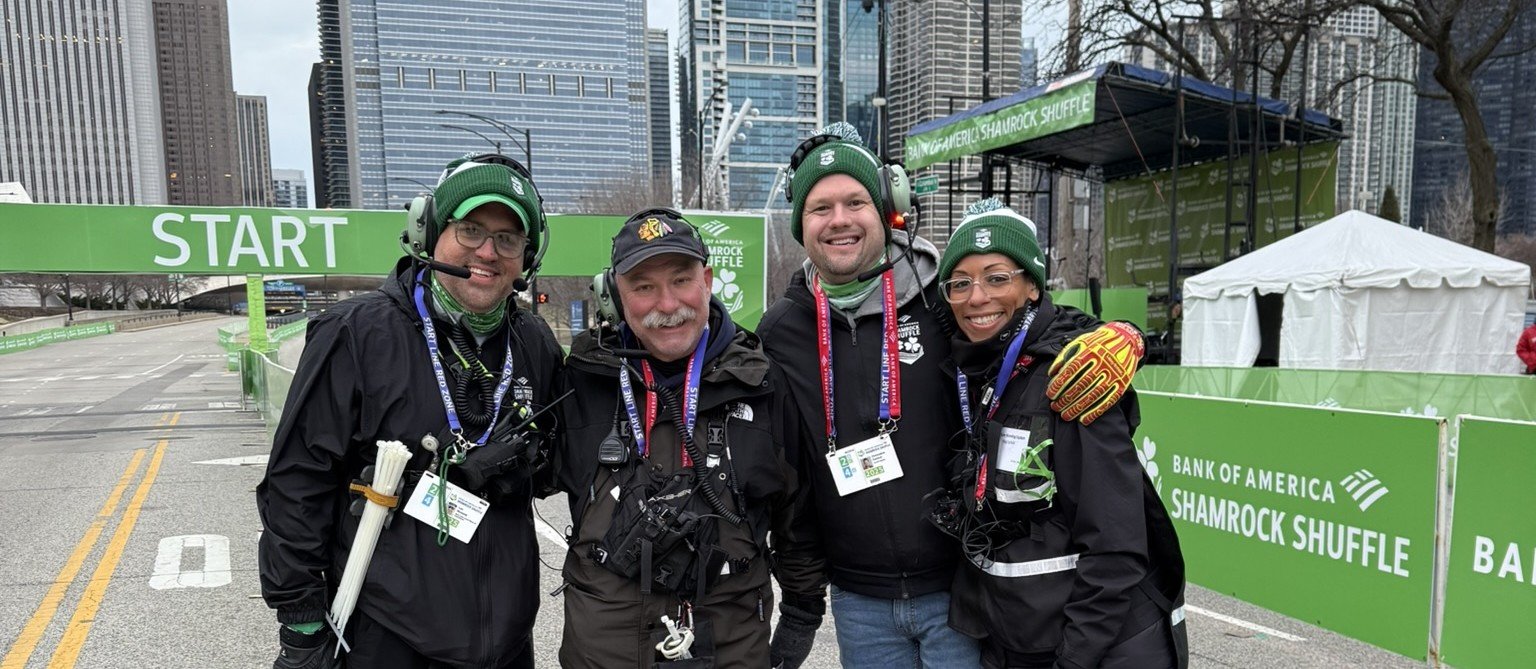Calm in Chaos: What 50,000 Runners Taught Me About Operational Leadership
At 2:00 AM on race day, downtown Chicago is quiet—except for a handful of people dressed in black, wearing high-vis stripes and pilot headsets, walking with purpose.
We’re the STOPS team—the Start Line Operations crew for the Chicago Marathon, Shamrock Shuffle, and Chicago 13.1. And in just a few hours, we’ll be leading 50,000 runners into one of the world’s most iconic races with minute-by-minute precision.
For the past decade, this has been my favorite “volunteer” job—and the best leadership lab I’ve ever found.
#The Mission Is Simple: Get 50,000 Runners Across the Line. Safely. On Time. On TV. In practice? It’s organized chaos.
Each wave has thousands of runners, broken into corrals by pace. We build the start line structure over two days—fencing, barricades, signage, sponsor branding, media zones, emergency access lanes—and then manage a field of volunteers who move runners from staging into their corrals, then from those corrals to the start line.
And it all has to run on time. Wave 1 at 7:30 AM. Wave 2 at 8:00. Wave 3 at 8:35.
There are no extensions. No do-overs. It’s live. It’s televised. It’s real.
#What I Do: Wave Coordinator and Chaos Calmer I usually coordinate Wave 1 or Wave 2. That means overseeing multiple corrals, each with a captain and 10–20 volunteers. Our job is to create flow—to move tens of thousands of runners smoothly and safely from Grant Park onto Columbus Drive and across the start line.
We lead each corral to within 200 feet of the line, then hand off to the front-of-line crew and sprint back to pick up the next.
Every race brings new challenges. Not enough volunteers. Extreme heat or cold. A semi truck parked in a corral. A car driving through the start chute. Once, I arrived to find a fence section sparking—literally electrified due to a bad ground on a municipal light pole. With runners just steps away, I clipped the tie, barricaded the pole, and called it in. Then we moved on.
#What You Learn at the Start Line
- You lead with preparation—and then let go.
- You respond to what is, not what should be.
- If you do it right, no one notices.
- Failure is public.
- You're only as good as your team.
#Why It Matters I’ve led operations in companies from startups to $200M+ pandemic response efforts. I’ve stood up data systems, labs, logistics fleets, and transformation programs. And I mean this sincerely: nothing trains you for high-stakes ops leadership quite like standing in front of 10,000 runners with 60 seconds until go-time and knowing it’s all on you.
The stakes are different. But the leadership is the same.
If you can lead from the start line, you can lead anywhere.

